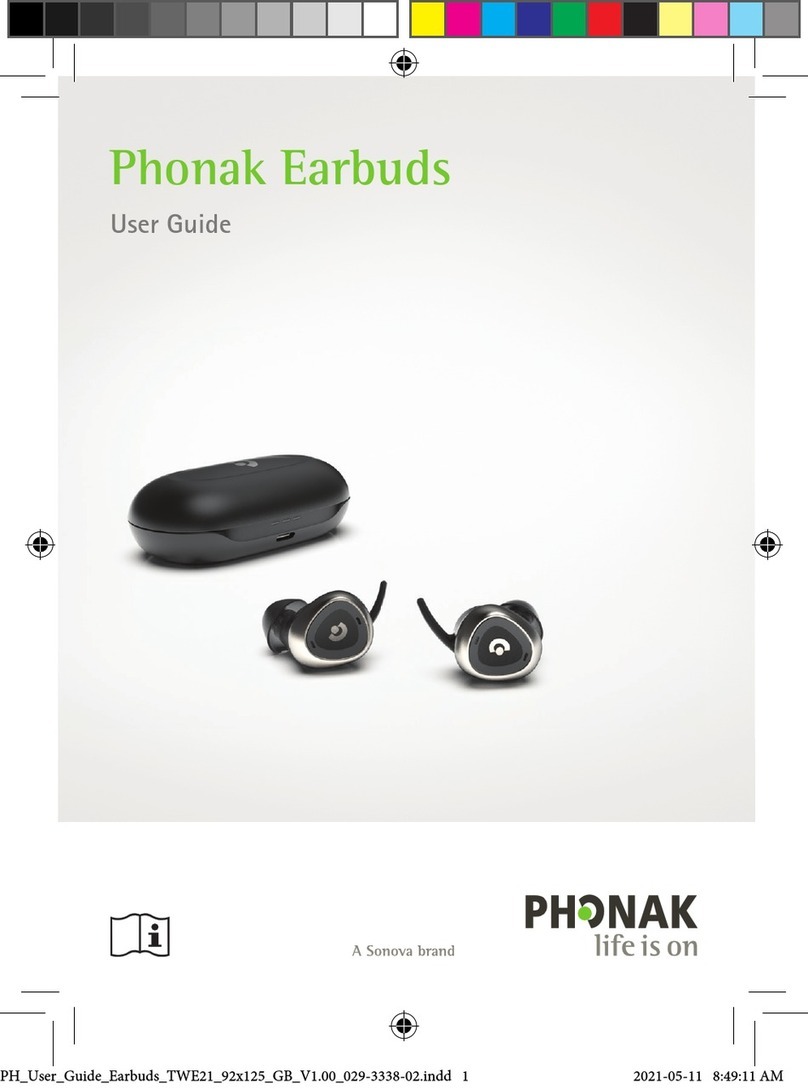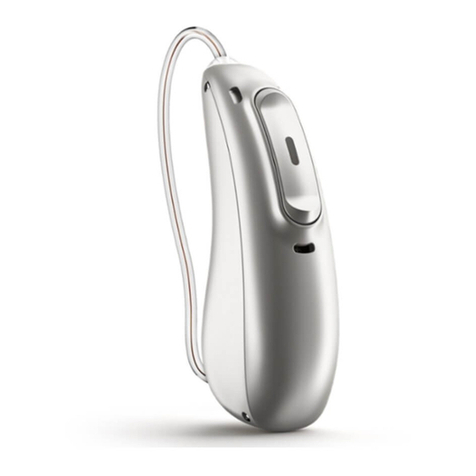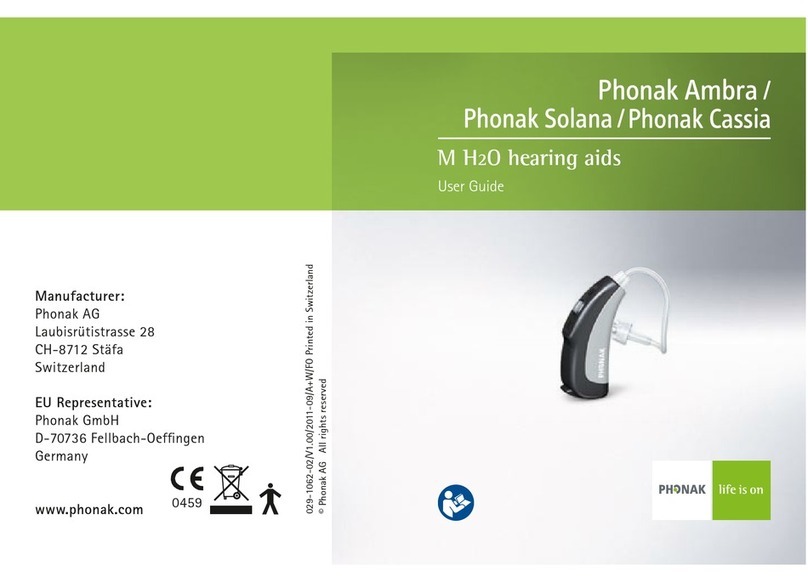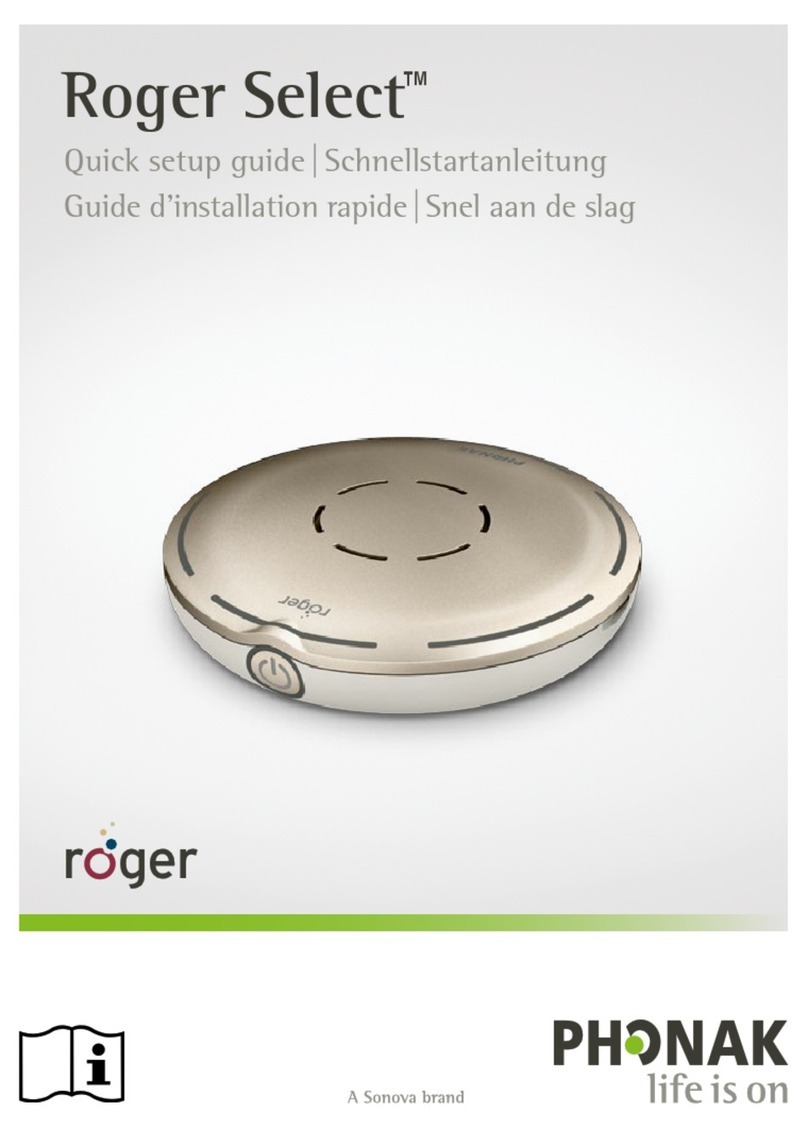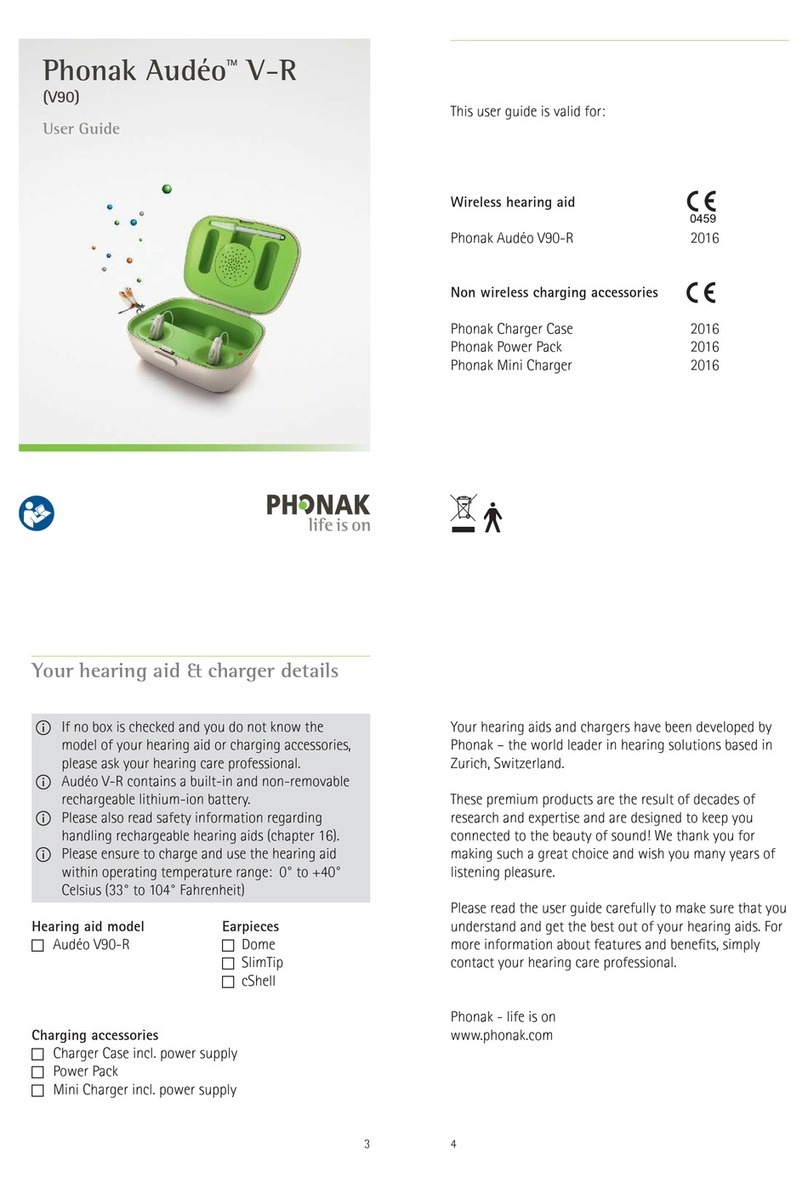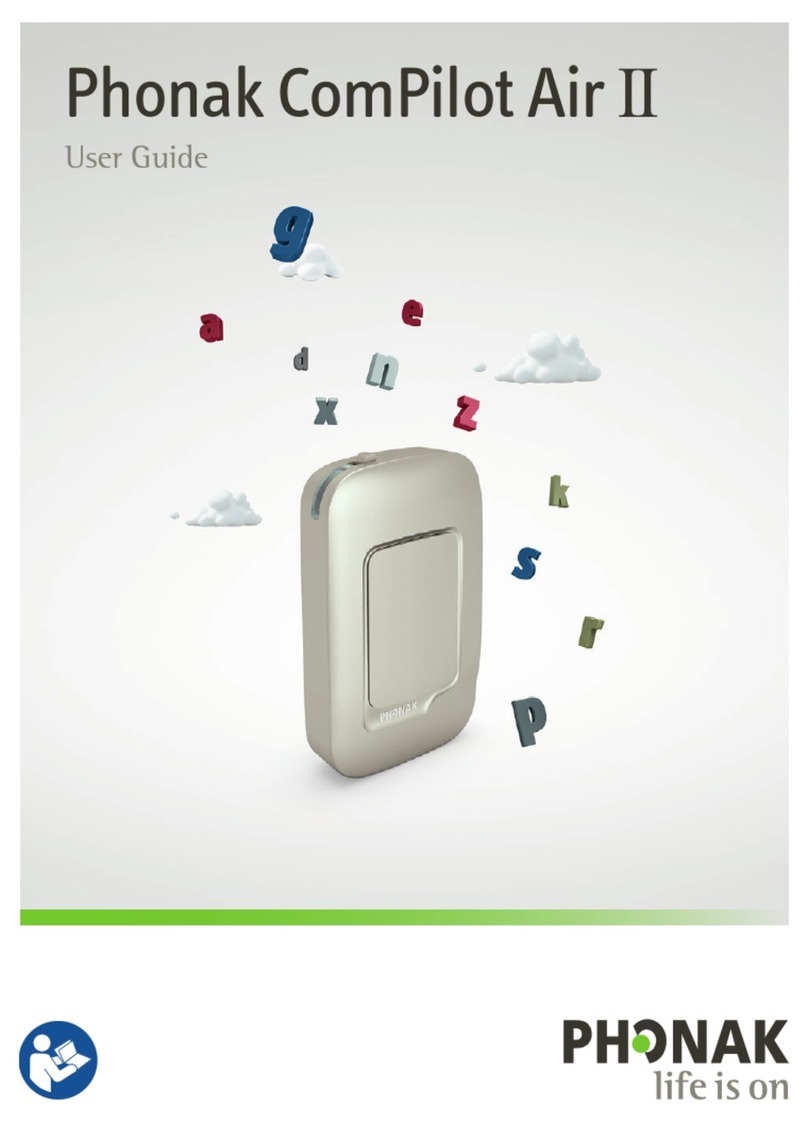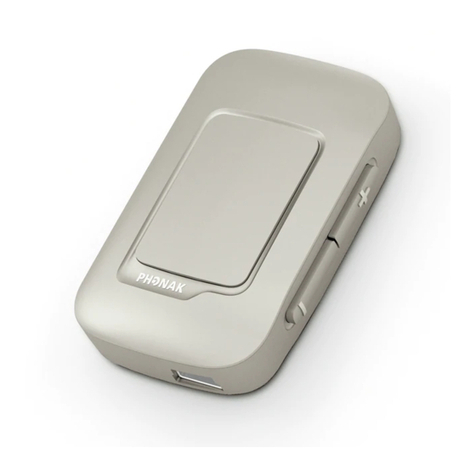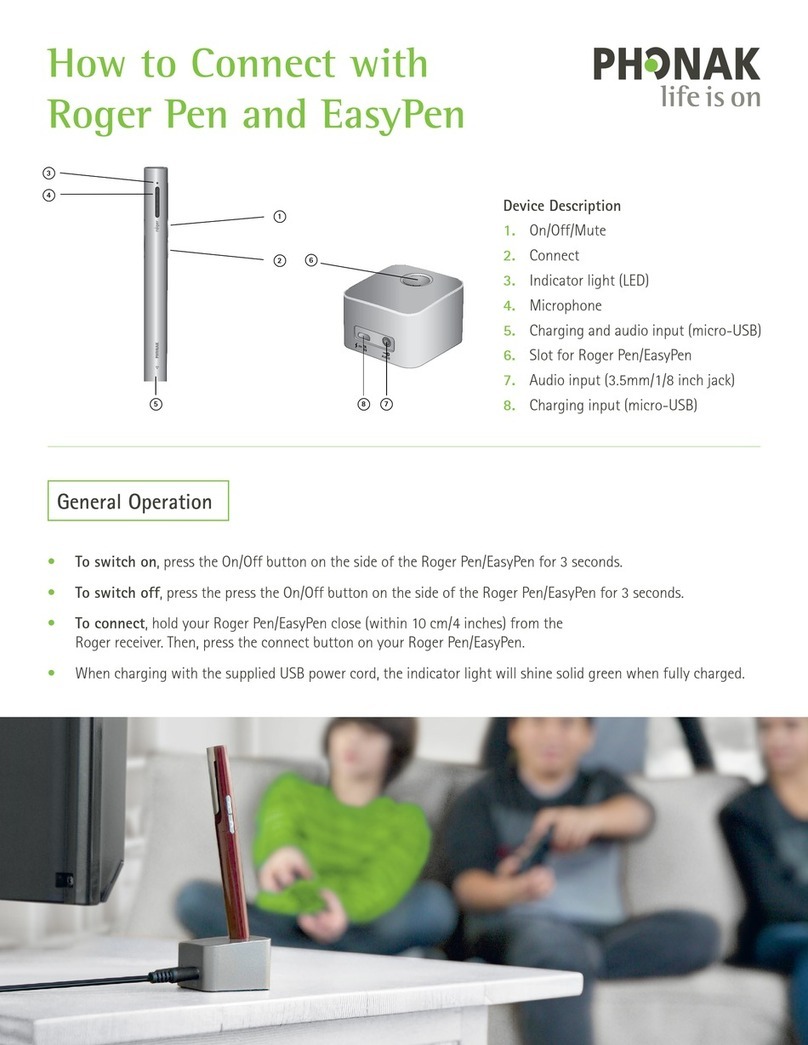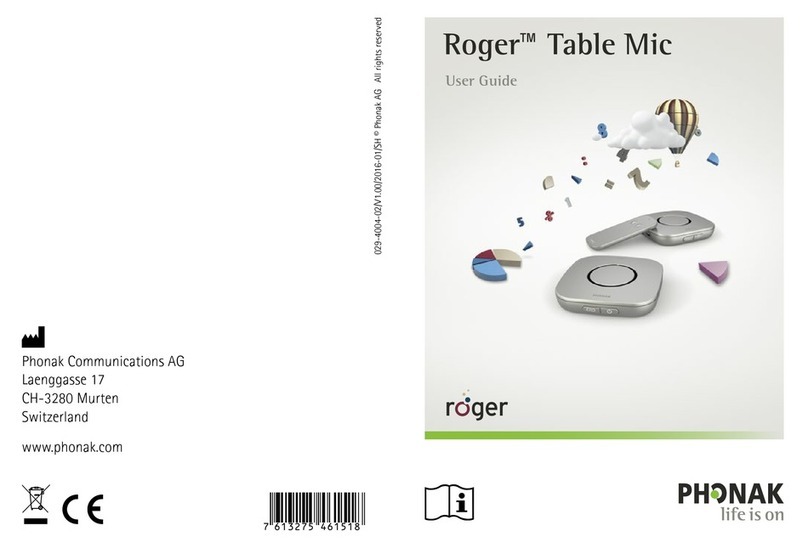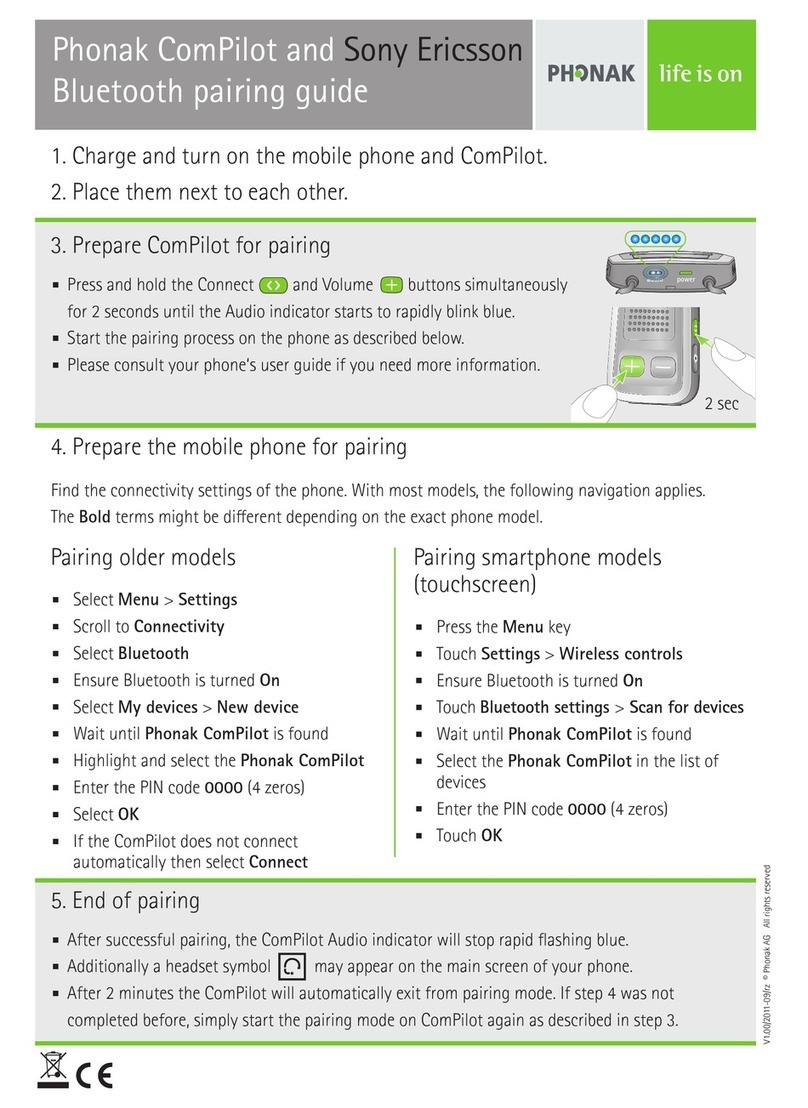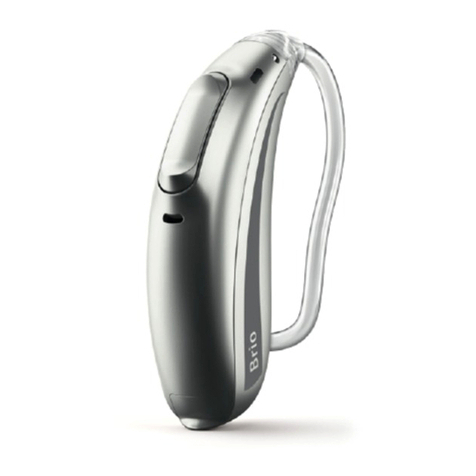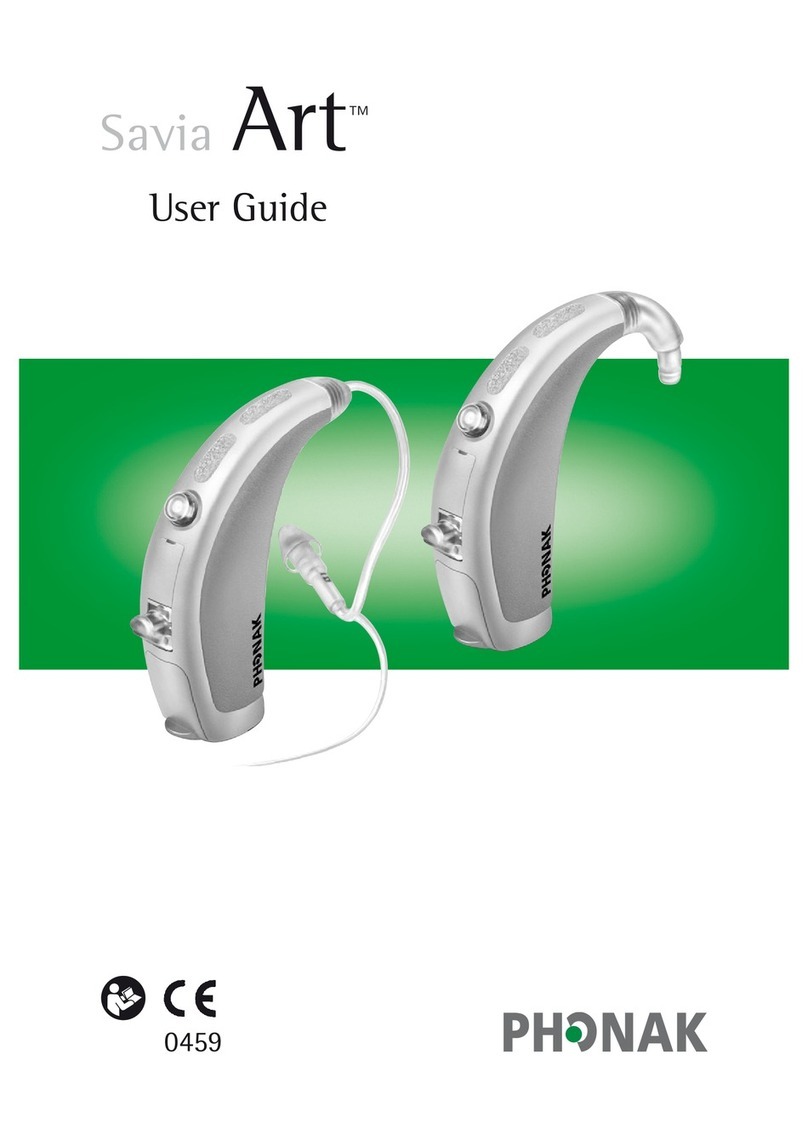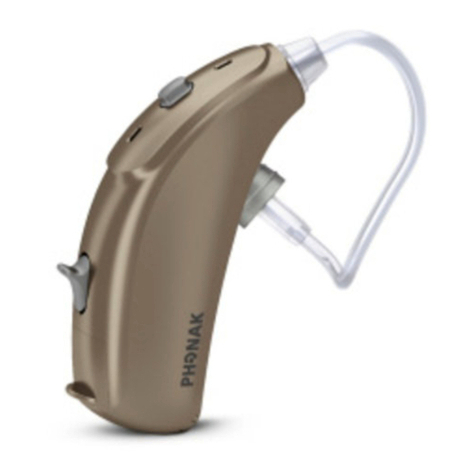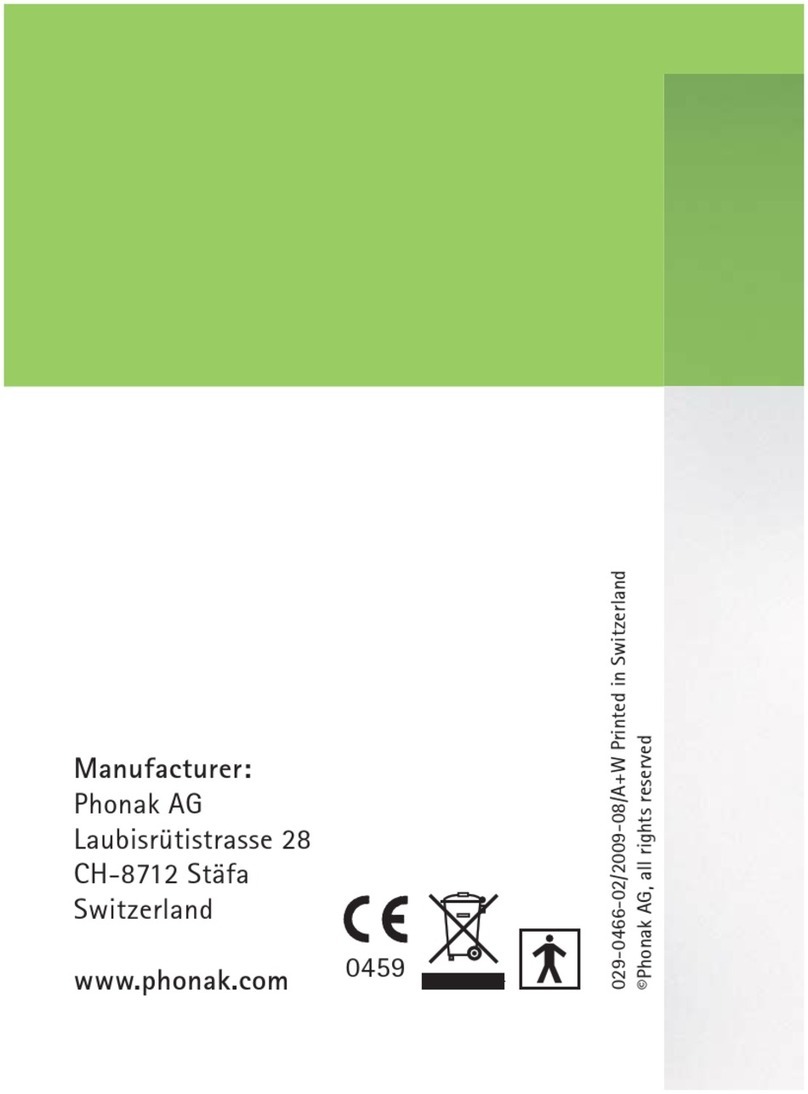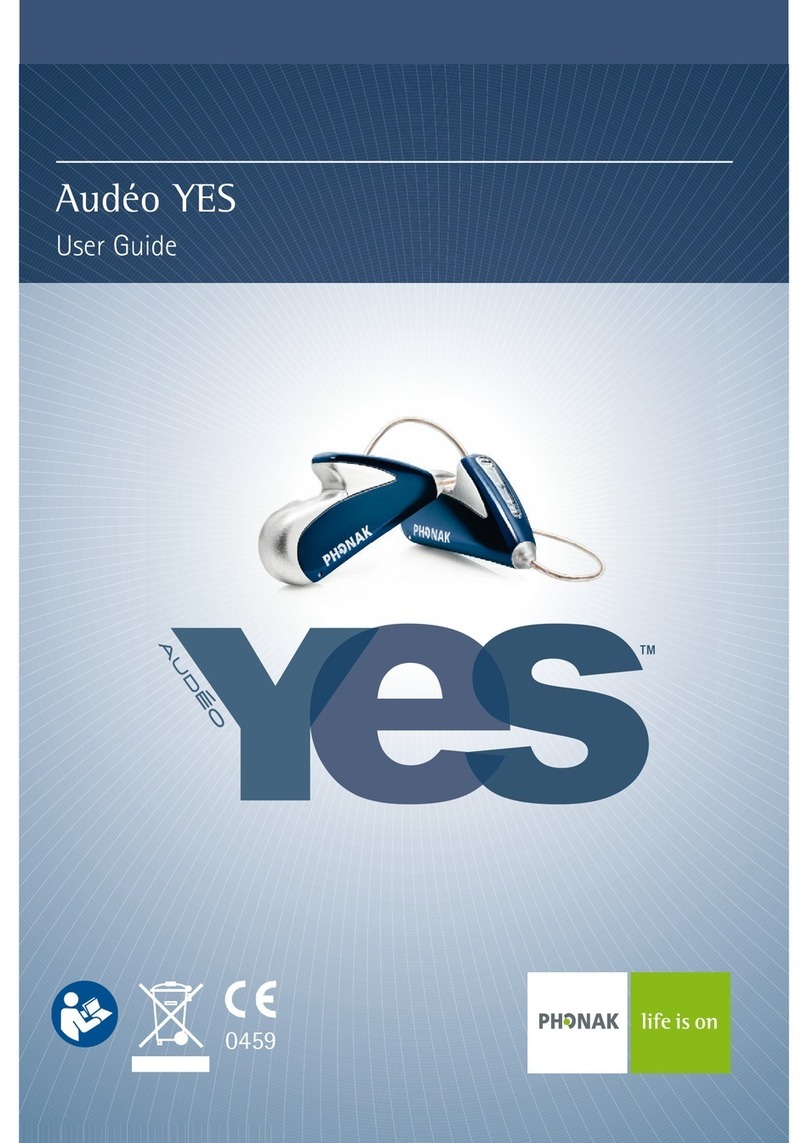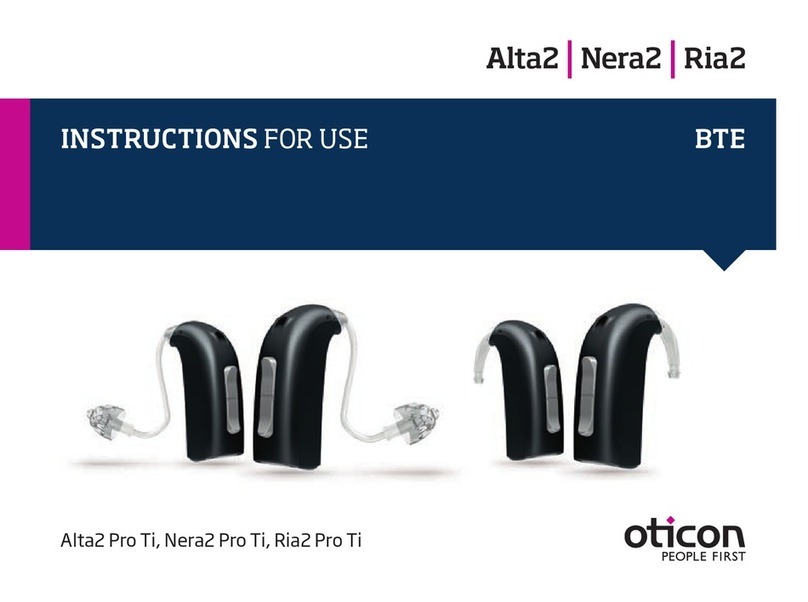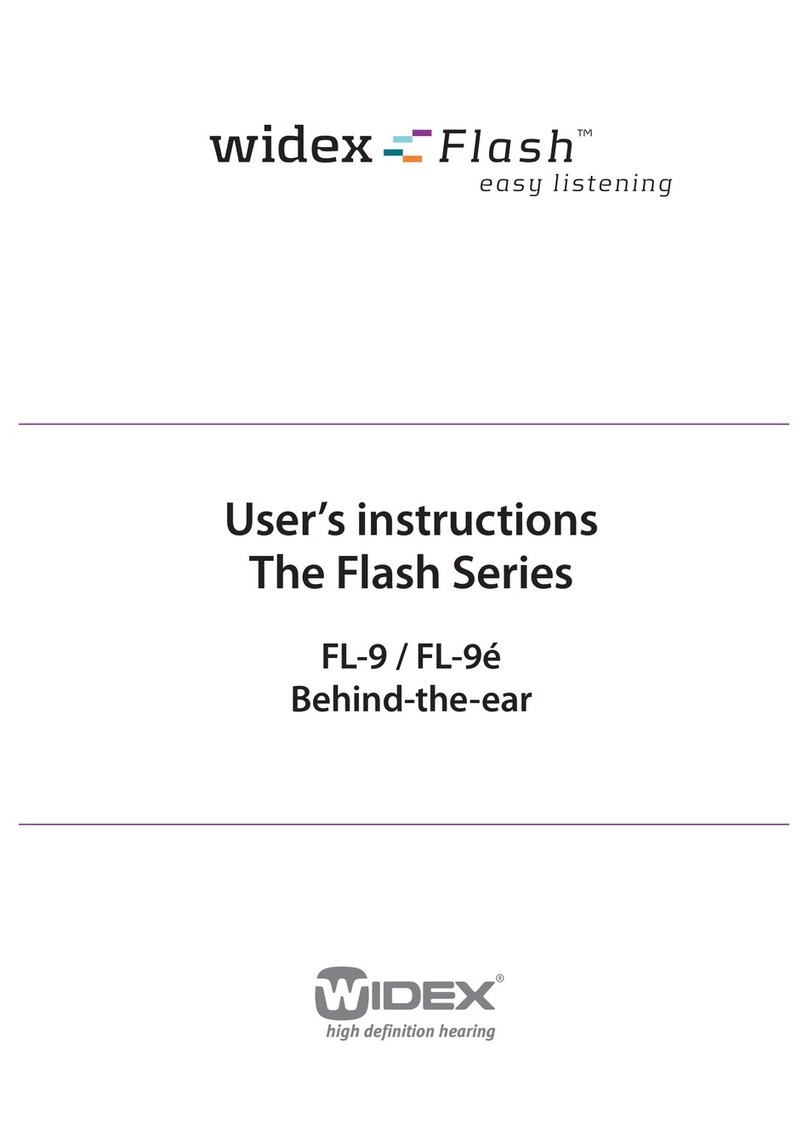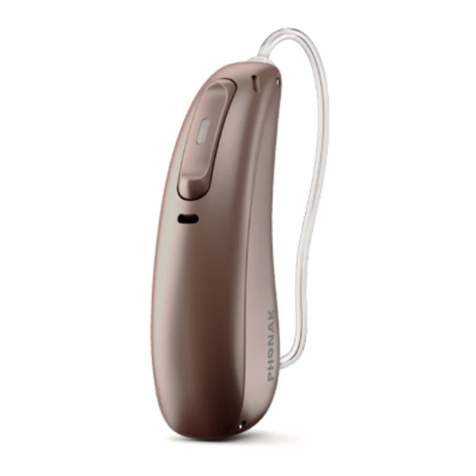12 13
3.1 Wearing the system
uThe ear mold to your FreeeCom 3000 headset is marked black with an acronym of your name,
and is either for your right or your left ear (depending on which mold you had made).
uInsert the ear mold into your outer ear with the opening pointing into your ear canal 1.
uTwist the ear mold slightly to insert it fully into your ear 2. Ensure that it holds firmly in
your outer ear and forms a good seal 3.
uAdjust the boom microphone to sit within 1 cm of your mouth, close to your upper lip. Ensure
that the microphone sound inlet, marked with a white dot points towards your mouth 9.
uSet the output volume on the aircraft audio panel to the minimum level before connecting
the FreeCom 3000.
3.2 Removing the system
uHold the ear mold by the earJackTM and withdraw it carefully from your ear, using a slow
forward movement to avoid a rapid pressure drop.
3.3 Maintaining the system
uDismount the earJack™ adapter from the ear mold by pressing the snap lock springs
together 4and withdrawing the adapter, starting from the top 5.
uClean and disinfect the ear mold with soap and water. Never use water or other liquid to clean
the earJack™ adapters or the boom microphone. Let your ear mold dry fully before use.
3 Instructions For Use 3 Instructions For Use
uReconnect the earJack™ adapters into the ear mold by first hooking the lower hinge of the
earJack™ adapter into the mold 6, then pushing the upper part firmly in until it clicks 7.
By correctly mounting the adapter, you will ensure a tight seal and proper operation of the
headset's hearing protection.
The FreeCom 3000 is equipped with a boom microphone to pick up the user’s voice for
communication. The microphone has close-talk, directional characteristics to provide maximum
suppression of ambient noise. The earJack™ adapter that features the boom microphone can be
attached to either your left or right ear mold. When using FreeCom 3000 products in outdoor
environments, foam windscreens signicantly reduce the wind noise generated by turbulence
around the microphone. A foam windscreen sleeve can be pulled over the microphone. Check
that the front microphone inlet (with the white dot on the microphone) still points toward the
mouth after mounting the sleeve.
4.1 Use / Mounting / Removing of windscreen
uTo keep the windscreen in position, the boom microphone is equipped with a Velcro part 8.
uTo mount the windscreen to, or remove it from, the boom microphone, lift the windscreen
over the Velcro part and pull it on or remove it from the microphone 8 .
4 Boom Microphone
